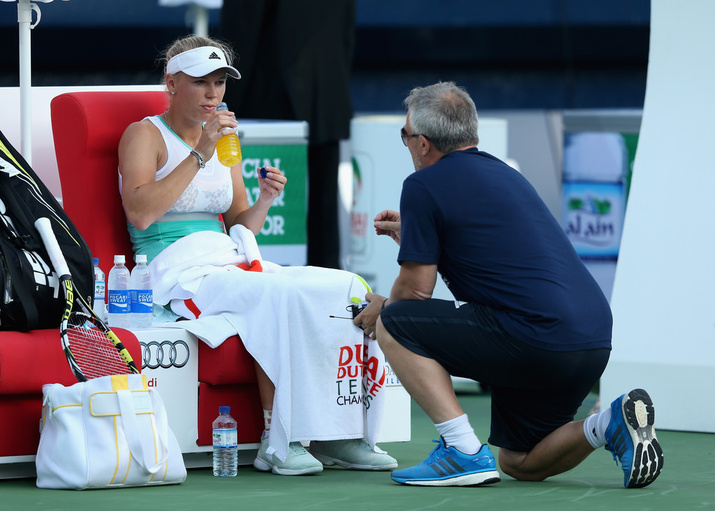Don't miss any stories → Follow Tennis View
FollowWTA: Addressing Questionable Decisions
The tennis has been hot on the courts of Miami, but Steve Simon, CEO of the WTA, managed to make some headlines of his own this past week. Simon suggested that he not only looks to continue the use of on-court coaching but may explore expanding it. He also confirmed that he is not looking to tackle the grunting issue any time soon. Simon clearly has his reasons for taking his stance on these issues, but while many respect that stance, a number do not agree with him.
The topic of grunting has increasingly become a point-of-contention the last few seasons. One of the main complaints is that the tour fails to differentiate between a grunt and a shriek. The shriek, most notably attributed to Maria Sharapova and Victoria Azarenka is deemed more distracting to fans. And while Simon has stated he is all for the hindrance rule being invoked if need be, a case can be made that a shriek or exaggerated grunt is a hindrance. If the grunt is made louder to intimidate an opponent, or a shriek is so loud or so long that it inhibits the opponent's ability to hear the ball come off the strings, that is a hindrance, plain and simple. Unfortunately, so long as the WTA's most marketable players are the main culprits, this is an issue that sadly is not going to be fixed anytime soon.

An issue that could be more readily resolved is the detrimental effect on-court coaching has on the women's game. Yes, other sports allow coaching throughout the competitive contest, and yes, there is a certain amount of illegal coaching that goes on from the stands. But since when is the idea that “everyone else is doing it” an acceptable reason to follow suit? Coaches are paid to teach their charges to utilize their strengths, protect their weaknesses, and to formulate a strategy for any given opponent. Once a match starts, it is expected that the player can troubleshoot and adapt to the situation to get the victory. This not only highlights the unique nature of tennis, but it also helps to slightly level the playing field between those who can afford the best coaches and those who cannot.
Aside from protecting one of the greatest aspects of the sport, however, on-court coaching needs to be eradicated for an even greater reason. It hurts the image of the women's game. Simon argues that there are some great coaching personalities that fans want to see and hear. Sure, there are. But those coaches should be interviewed before, after, or if they will consent to it, during a match by a court-side commentator. The players themselves should be entertaining enough to sell women's tennis and not have to rely on intriguing coaching personalities to gain viewers.

On-court coaching also suggests that the women are incapable of winning a match without someone holding their hand to get them to the finish line. This is an image that has been in existence since on-court coaching started back in 2009, and it is due primarily to the fact that on-court coaching does not exist in the men's game. If the women are truly offering a comparable product to the men, should they not be expected to compete without that optional crutch? Furthermore, if results at the majors are any indication, that crutch is becoming increasingly necessary for numerous players. The slams do not allow on-court coaching, and the absence of that tool has led many to speculate that the record number of seeds making an early exodus at the slams is due to the fact that they have forgotten how to cope with adversity on their own. This is undoubtedly oversimplifying things, but it could certainly be a contributing factor.
All told, respect has to be given to Steve Simon for his decision in these matters, but that does not negate that fact that it still feels wrong. Allowing the continuance of grunting and on-court coaching will do little to endear fans or improve the image of the women's game and will likely only hurt it in the long run. Hopefully, somewhere down the road, eyes will be opened that will take women's tennis back to its more traditional roots, and the sport will be all the richer for it.










